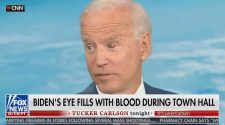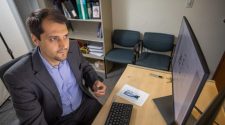The Brody School of Medicine is simultaneously preparing for re-accreditation and conducting ongoing mediation with Vidant Medical Center, the vice chancellor of health sciences reported to ECU’s Board of Trustees last week.
The two issues are linked, said Dr. Mark Stacy, who also is dean of the medical school. A contentious relationship with Vidant Medical Center, which serves as the medical school’s teaching hospital, could hamper re-accreditation, he said.
Accreditation is a process that assures an education institution meets stands for function, structure and performance. Medical schools in the United States and Canada are accredited by the Liaison Committee on Medical Education.
The Brody School of Medicine will submit its accreditation package to LCME in November and then host its survey team in March, Stacy said.
As part of an 18-month preparation process, the medical school invited the head of accreditation to informally review Brody’s program, Stacy said. After reviewing some of Brody’s presentation, she said the school wouldn’t be reaccredited.
“So we have scrambled and scrambled and worked very hard to take advantage of that crisis and to begin looking at how we can be better prepared,” he said.
Among the problem areas the medical school is working to resolve is reshaping its agreements with its affiliate faculty, medical providers who allow medical students to study and work in their practices.
“There are certain major clinics that we’ve used as rotation sites that are being paid by other medical schools to serve their students,” he said.
“We have been able to overcome that, but increasingly we are not and (payment is ) going to become an accepted component of providing medical education,” Stacy said.
It’s a situation that also is facing ECU’s nursing school, dental school and allied health sciences programs as they try to find affiliate faculty to work with students.
Another issue is student safety in the community. A number of medical students live in private housing and cross West Fifth Street, a multi-lane highway, to reach the health sciences campus.
“We are trying to argue with our friends from the city that we really do need a crossing there to keep our kids safe,” Stacy said.
Updating the school’s biostatistic and biochemistry classes and opening a financial aid and counseling office on the health sciences campus also are areas that need addressing.
The UNC Board of Governors and East Carolina University sued Vidant Medical Center and Pitt County’s Board of Commissioner earlier this year over a governance change that stopped the Board of Governors from appointing members to the hospital’s Board of Trustees. Shortly after mediation began, the General Assembly adopted a budget that would provide $215 million to design and build a larger facility for Brody, allowing the medical school to accept more students. However, the funding is contingent on the hospital reinstating the Board of Governors appointments to the hospital board.
Gov. Roy Cooper vetoed the $24 billion budget, which included the medical school funding, because it did not include Medicaid expansion.
On Wednesday, the state House successfully passed an override vote. The state Senate also has to override the veto. Senate rules require a 24-hour notice be given on an override vote and none had been issued as of Friday. Only one Senate Democrat needs to join the Republicans to override the veto.
Stacy said he is optimistic about the mediation results because the core values of Vidant Health Systems and the medical school “are very consistent in terms of our clinical care and our reputation goals.”
Vidant Health does strong work in addressing the health issues common to eastern North Carolina, he said. Marry that to the university’s School of Rural Public Health and the two institutions can use dollars more efficiently by finding ways to cooperate.
Stacy said he also hopes to see discussions about securing a mission payment from Vidant.
Most medical schools own and operate a hospital and receive a portion of the hospital’s revenue.
Vidant and Brody have differing views about mission payments, Stacy said.
Vidant and the medical school have 156 contracts that outline the services Brody faculty and physicians provide the hospital.
“When the health system talks about mission payment (the contracts) may be what they consider a mission payment because that’s the mission of their health system,” Stacy said.
He defines mission payments as “visionary payments.”
“It’s the responsibility of a medical school to think were are we going to be in 20 to 40 years,” he said.
That was easier 20 and 30 years ago when the medical school was smaller and the state gave more funding to Brody, he said.
It allowed ECU faculty to pioneer breakthroughs such as robotic surgery, which has lessened the physical trauma of surgery and gastric bypass, which reverses diabetes.
“Some of the things that I think are important to the school will change health care,” he said. We need to have a mission here to change health care.”
A little money goes a long way at ECU, Stacy said.
When he joined the school he received $3 million that he was able to invest in lab testing equipment and coolers, put towards improvements in the grant application process.
Within a year, the school secured $2.8 million in direct and indirect research funding.
Between 2018 and 2019, the average award size grew from $168,000 to $233,000.
Stacy said he envisions using mission payment dollars to create scholarships awarded to medical students with the caveat they practice in eastern North Carolina. Other resources could be put in place to help them outfit and operate their medical practice.
Mission payment funding could expand existing programs to develop future doctors or give students with low medical school test scores a change to see if they can succeed.
The Vidant health system is nationally recognized, Stacy said. ECU’s medical school, nursing school and other health sciences programs are nationally recognized. The two institutions have the same goals for improving the region’s health.
We do have urgency in getting some relationships back on track,” he said.















